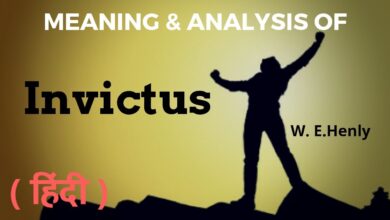Disquantified Contact: Redefining Human Connection Beyond Numbers

In a world increasingly obsessed with metrics—followers, likes, performance scores, KPIs—the idea of disquantified contact offers a refreshing counterpoint. At its core, disquantified contact refers to human interaction that is free from measurement, evaluation, or reduction into numbers. Instead of seeing relationships as data points, disquantified contact focuses on the depth, authenticity, and qualitative richness of connection.
This concept challenges the assumption that everything meaningful can be tracked or optimized. By understanding and practicing It, we can reclaim spaces of intimacy, presence, and genuine engagement that are often overshadowed by analytics-driven living.
The Origins of Disquantified Contact
The term “disquantified” combines the prefix dis- (meaning removal or reversal) with quantified (meaning measured in numbers). Thus, It literally implies contact stripped of quantification. While not yet a mainstream academic concept, it has been used in thought pieces, cultural critiques, and philosophical discussions around modern life.
Historically, human contact has always been qualitative: conversations around a fire, community rituals, and everyday companionship were valued for their felt experience, not for metrics. Only in recent decades, with the rise of digital platforms, corporate KPIs, and data-driven social networks, has quantification invaded even the most intimate aspects of our lives. It emerges as a response to this trend.
Why Disquantified Contact Matters in a Quantified World
The average person now navigates a landscape where nearly every action leaves a measurable trace. Social media assigns likes to friendships, fitness apps track every step, and workplace systems quantify productivity. While numbers can bring clarity, they also risk flattening human experience into mere metrics.
Disquantified contact matters because:
- It restores authenticity in human interactions.
- It provides mental relief from constant evaluation.
- It fosters trust and empathy without competitive pressures.
- It values presence over performance.
By stepping away from metrics, even temporarily, we allow relationships to breathe and evolve without the pressure of numerical validation.
Key Characteristics of Disquantified Contact
To better understand disquantified contact, here are some defining features:
- Non-measurable: The focus is on quality, not quantity.
- Unconditional: Interactions are not tied to outcomes or ratings.
- Presence-driven: Attention and mindfulness are central.
- Reciprocal: Connection flows naturally, without competition.
- Open-ended: There is no fixed metric of success.
These qualities stand in sharp contrast to quantified systems, where every action has a measurable consequence.
Disquantified Contact in Personal Relationships
In friendships, family bonds, or romantic partnerships, It can be transformative. Consider the difference between counting how many texts someone sends versus cherishing the emotional depth of a single heartfelt message.
Examples include:
- Sharing time together without documenting it for social media.
- Listening without rushing to offer measurable advice.
- Valuing the unspoken comfort of presence rather than quantifiable acts.
In this sense, It strengthens bonds by removing performance pressure and allowing organic connection.
Disquantified Contact in Professional Settings
Workplaces often revolve around targets, KPIs, and measurable outputs. While these are necessary for efficiency, It can enhance collaboration and morale.
For example:
- Leaders practicing empathetic listening without reducing conversations to performance reviews.
- Teams engaging in brainstorming sessions where ideas are valued before being scored.
- Mentorship that emphasizes growth, not just measurable milestones.
By introducing It into professional environments, organizations can balance accountability with humanity.
Digital Life vs. Disquantified Contact
Our digital lives are saturated with metrics: follower counts, likes, shares, engagement rates. These metrics often define worth in online spaces. Disquantified contact, however, pushes back against this digital quantification.
Practical examples include:
- Engaging in direct, meaningful conversations instead of chasing likes.
- Choosing video calls with loved ones over social media interactions.
- Practicing “digital minimalism” to reduce reliance on quantified feedback loops.
By embracing It online, individuals can cultivate healthier digital habits.
Practical Ways to Cultivate Disquantified Contact
Cultivating It doesn’t require radical lifestyle changes—it begins with intention. Here are some strategies:
- Unplug regularly: Create tech-free zones or hours.
- Practice deep listening: Focus entirely on the person, not on formulating responses.
- Value silence: Sometimes presence speaks louder than words.
- Reject scorekeeping: In relationships, avoid keeping tally of favors.
- Celebrate spontaneity: Allow interactions to unfold naturally.
Each of these practices helps shift the focus from measurement to meaning.
Benefits and Challenges of Disquantified Contact
Benefits:
- Greater emotional depth in relationships.
- Reduced stress from constant evaluation.
- Increased authenticity and trust.
- Enhanced creativity in both personal and professional life.
Challenges:
- Modern systems reward quantification, making it hard to escape metrics.
- Lack of clear benchmarks may create uncertainty.
- Risk of inefficiency in organizational settings.
- Requires conscious effort to resist cultural pressures.
Balancing these factors is key to integrating disquantified contact into daily life.
Frequently Asked Questions
1. What does disquantified contact mean? It refers to human interaction free from numerical measurement or performance metrics, emphasizing quality over quantity.
2. Is disquantified contact the same as mindfulness? While related, mindfulness focuses on awareness in the present moment. It specifically emphasizes removing numbers and metrics from human relationships.
3. Can disquantified contact exist in professional settings? Yes. Though workplaces rely on metrics, incorporating empathy, open dialogue, and mentorship fosters disquantified contact alongside productivity.
4. How is disquantified contact different from digital detox? Digital detox involves stepping away from technology, while It is about fostering authentic, non-measurable interactions—online or offline.
5. Why is disquantified contact important today? It helps counterbalance a culture dominated by metrics, restoring authenticity, trust, and emotional presence in human relationships.
Conclusion: The Future of Disquantified Contact
As society continues to prioritize numbers and measurable outcomes, the practice of disquantified contact offers a necessary antidote. It reminds us that the most valuable aspects of human connection—love, trust, empathy, presence—cannot be captured by metrics. By integrating disquantified contact into our personal lives, workplaces, and digital habits, we can build richer, more authentic connections.
The future may well depend on our ability to balance quantification with disquantification, ensuring that while data helps us progress, it does not strip our interactions of their humanity.





